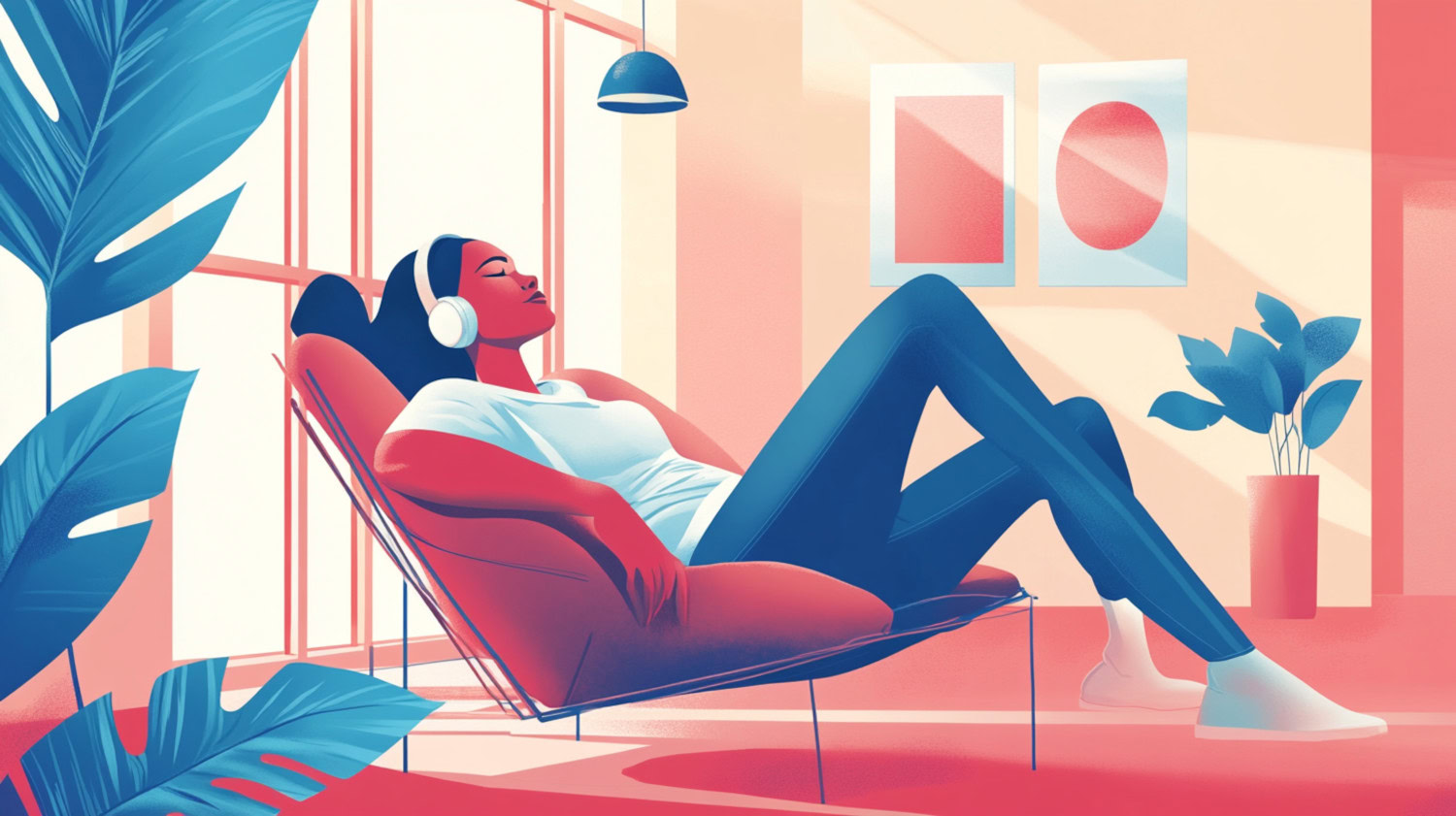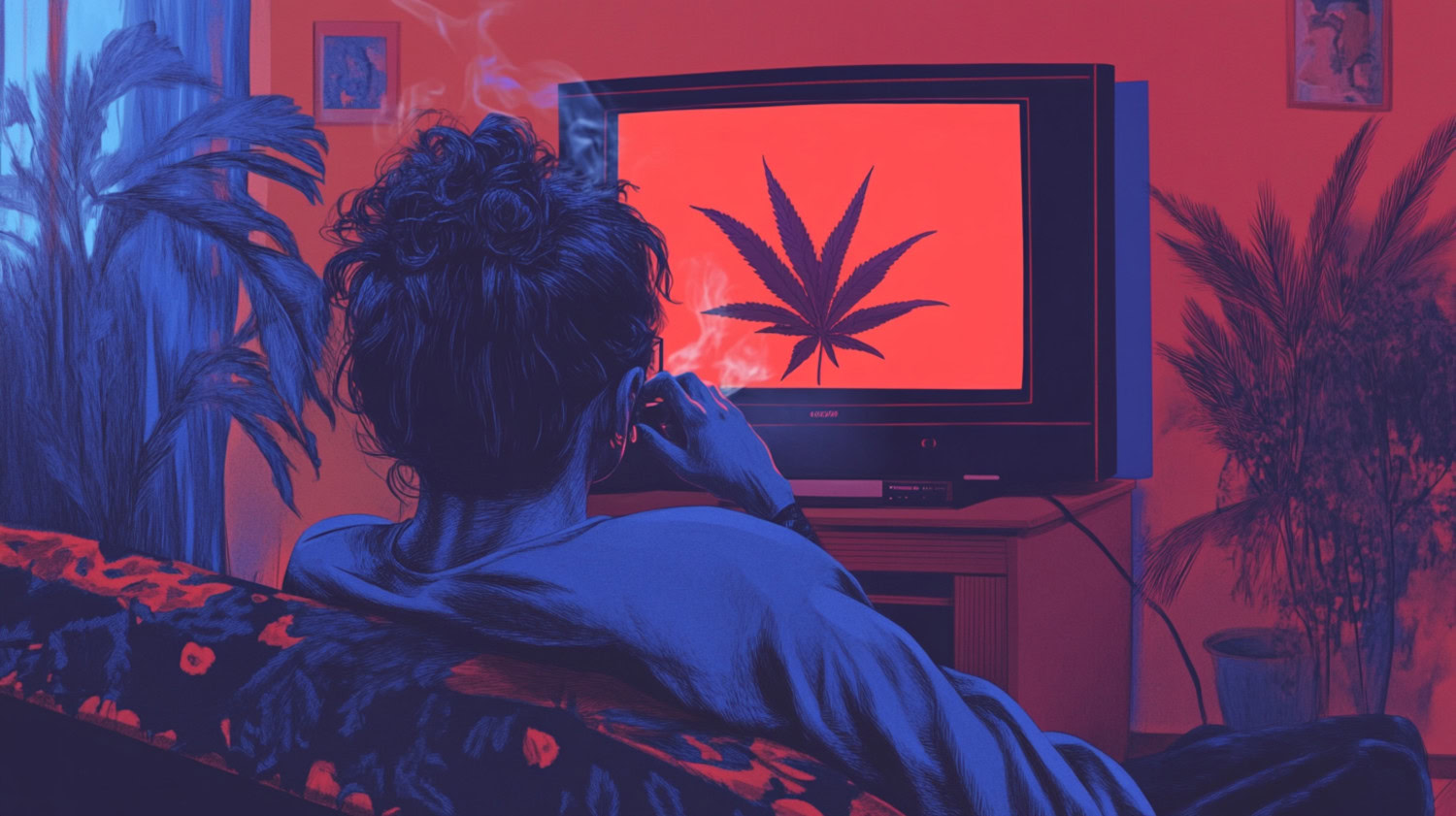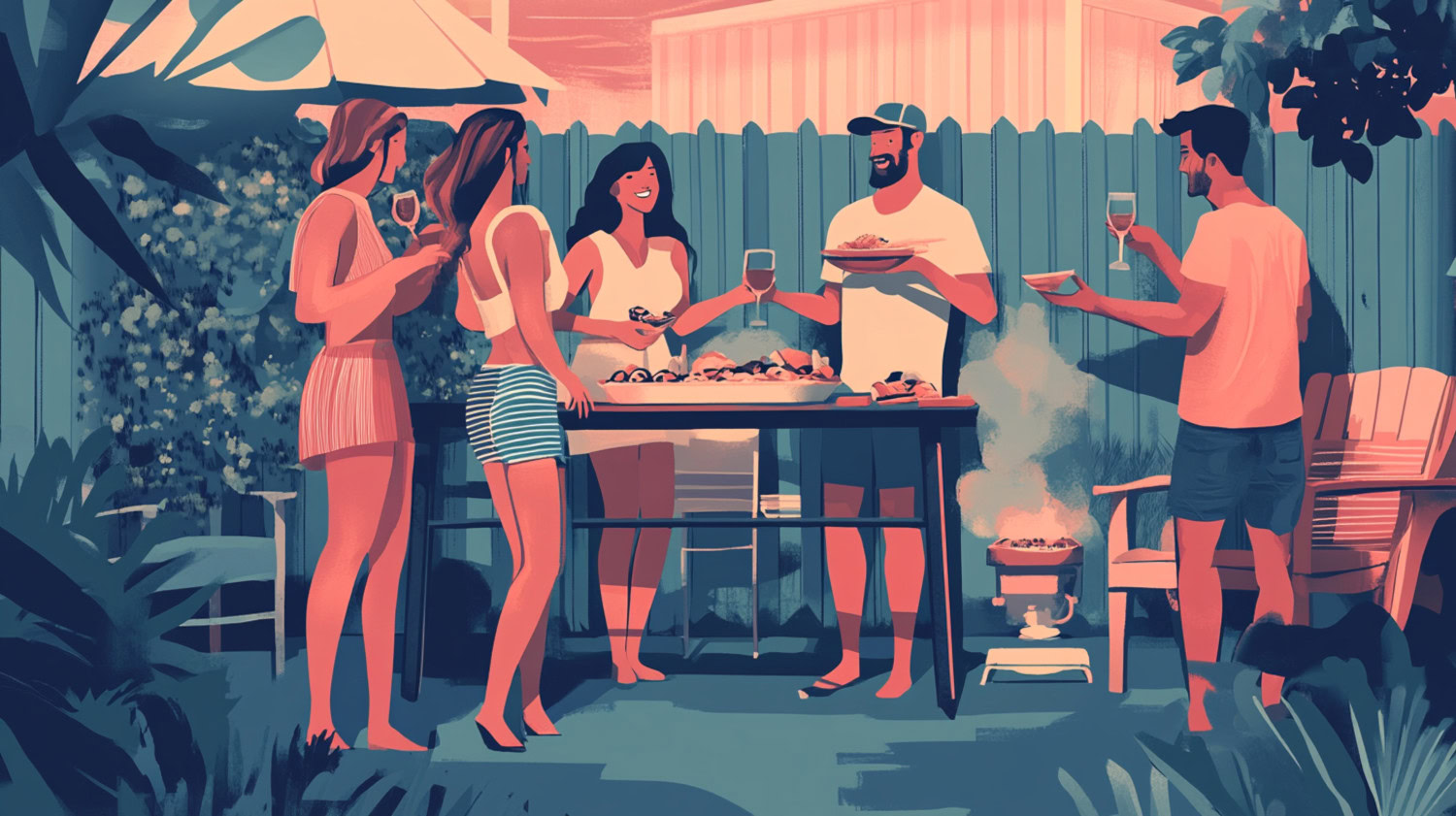In This Article
- Can Set and Setting Make Weed More Relaxing?
- How to Create a Relaxed Mindset
- Relaxing Music to Listen to With Cannabis
- Relaxing Movies and TV to Watch With Cannabis
- Relaxing Activities to Do While Using Cannabis
- Snacks, Food, and Drinks for a Relaxing Weed Experience
- Tips for Preventing a Disruptive Experience
- References
Key Takeaways
- Mindset and environment can significantly influence the cannabis experience.
- A calm state, a comfortable space, and prepared activities enhance the session.
- Creating the ideal environment is likely to produce the best possible outcome for newcomers and veterans alike.
A calming cannabis consumption session begins long before the first inhale or bite. The mindset, atmosphere, and intention all shape how the experience will likely unfold.
Quiet surroundings, low-stress activities, and a relaxed headspace can help to steer a successful session. Since every person’s experience will vary depending on numerous internal factors, curating the ideal external conditions may help to create the most relaxing cannabis consumption experience.
Can Set and Setting Make Weed More Relaxing?
Set and setting can play a substantial role in how cannabis affects the mind and body. While cannabinoids like THC and CBD influence the body’s systems, environmental factors and personal mindset often determine whether the experience feels relaxing or overwhelming.
Many experts in psychedelic research emphasize that a "setting" involves more than just the room. It includes elements like music, decor, and the cultural authenticity of the space.
These details communicate a sense of welcome, influencing relaxation and trust. Cultural components such as artwork, sounds, and even the composition of the people present with you can further enhance a person's comfort.1
Hanifa Nayo Washington, one of the founders of the Fireside Project, a nonprofit organization creating systemic change in the field of psychedelics, focuses on three key domains: safety, diversity, and equitable access. She notes that small changes to one's environment, such as adjusting the lighting or altering the music, can significantly transform an experience.
Elements like music, artwork, room temperature, and personal items are crucial for establishing the emotional tone and impact of a session.
How to Create a Relaxed Mindset
A calm mental state can be the foundation for a peaceful cannabis experience. Mindfulness and self-awareness may go a long way in helping cannabis promote relaxation rather than overstimulation.
Consider the following steps to ease into the right mindset:
- Take slow, deep breaths to calm your nerves and ground yourself.
- Set an intention to guide the session, for example, rest, reflection, and/or comfort.
- Minimize distractions by silencing alerts and stepping away from stressful media.
- Begin with a low dose to prevent overconsumption, especially when stress levels are already elevated. Those familiar with cannabis may start at a higher dose. Newcomers and those with less tolerance should consider starting with as low a dose as possible to avoid potential overintoxication risks.
Relaxing Music to Listen to With Cannabis
The right music can elevate the mood and deepen a sense of calm, especially when paired with cannabis. While music is subjective, it appears that nearly every genre resonates with some segment of cannabis consumers.
For example:
- Genres such as ambient, chillhop, jazz, acoustic folk, and downtempo electronica are frequently chosen for their soothing and immersive qualities.
- Ambient artists such as Brian Eno, Hammock, and Tycho craft soundscapes that promote stillness and introspection.
- Jazz legends like Miles Davis, Chet Baker, and Norah Jones offer rich textures and laid-back energy that align well with a mellow high.
- Acoustic and folk selections from José González, Iron & Wine, or Bon Iver lend a warm, earthy tone to the moment.
- Downtempo electronic acts like Bonobo, Emancipator, and Thievery Corporation blend rhythm and atmosphere in a way that supports reflection without overstimulation.
Whether instrumental or vocal-driven, music with gentle pacing and smooth transitions can help guide the experience, amplifying feelings of ease and relaxation. In short, play what feels best for the room and any guests taking part.
Relaxing Movies and TV to Watch With Cannabis

Much like music, relaxing visual content can help reinforce a restful mindset, while overstimulating or intense media may have the opposite effect.
To support a calming cannabis experience, many people turn to:
- Nature documentaries and educational series, such as "Planet Earth," "Fantastic Fungi," or "The Mind Explained," combine stunning visuals with soothing narration.
- Feel-good films and light comedies such as "Chef," "Paddington 2," and "Julie & Julia" offer warmth and comfort without emotional heaviness.
- Animated favorites like "Totoro," "Bluey," or "Bob’s Burgers" bring gentle humor and a soft visual style that suits a mellow mood.
- For those drawn to more introspective or visually experimental content, "The Midnight Gospel," "Koyaanisqatsi," and "Baraka" deliver meditative pacing and captivating imagery that align with a deeper, slower high.
While it may not always be ideal, some consumers genuinely enjoy loud action films and/or scary horror films. Though these genres may not work for everyone, reading the room and choosing what works best for those in attendance is always the best approach.
Relaxing Activities to Do While Using Cannabis

Pairing cannabis with relaxing, stimulating, and/or engaging activities often helps deepen the calming, pleasurable experiences intended from consuming cannabis. Broadly speaking, the goal is to remain engaged without activating stress or overstimulation.
Common calming activities may include:
- Journaling or doodling to foster creativity and emotional expression
- Gentle yoga or stretching to release physical tension
- Reading or listening to audiobooks for calm mental engagement
- Taking a bath or doing skincare as a form of self-care
- Spending time outdoors under the sun or stars
Try to pair the activities with the strains about to be consumed. For example, uplifting strains may pair well with light to moderate physical activities or mentally stimulating tasks. On the other hand, sedative strains are usually best suited for restful, more calming activities.
Snacks, Food, and Drinks for a Relaxing Weed Experience

The right snacks and drinks can enhance comfort without disrupting the vibe. Heavy, sugary foods may lead to crashes, while hydrating and nutrient-rich options often promote sustained ease. Some good options to consider include:
- Fruit: Packed with vitamins and terpenes that may influence the experience, like myrcene
- Nuts or trail mix: High in healthy fats and protein
- Dark chocolate: Naturally contains mood-enhancing compounds
- Herbal teas: Chamomile, peppermint, or lemon balm can help promote relaxation
- Cucumber- or citrus-infused water: For hydration and refreshment
Avoid overindulging in heavy snacks, as digestion can compete with cannabis’ relaxing effects. Also, avoid alcohol, as mixing with cannabis can lead to adverse outcomes. The effects of alcohol and cannabis can conflict internally, creating an experience some refer to as being crossfaded.
Tips for Preventing a Disruptive Experience
Even relaxing products can feel intense if the experience is not adequately set up. Preventive steps can help maintain calm and avoid anxiety.
Helpful safeguards include:
- Starting low and slow, especially with edibles or tinctures
- Avoiding alcohol, which can cloud the effects and raise anxiety
- Creating a fallback plan, such as having CBD on hand or a favorite playlist ready
- Consuming in a familiar, controlled space rather than in an unknown or unpredictable environment
- A grounding option: Warm drinks, cozy blankets, soothing scents, and other calming options can help stabilize the mood if anxiety begins to creep in.
References
- Mouktika M. Ayyagari, Derek Heim, Harry R. Sumnall, Rebecca L. Monk, Contextual factors associated with subjective effects of cannabis: A systematic review and meta-analysis, Neuroscience & Biobehavioral Reviews, Volume 164, 2024, 105822, ISSN 0149-7634, https://doi.org/10.1016/j.neubiorev.2024.105822. ↩︎
The information in this article and any included images or charts are for educational purposes only. This information is neither a substitute for, nor does it replace, professional legal advice or medical advice, diagnosis, or treatment. If you have any concerns or questions about laws, regulations, or your health, you should always consult with an attorney, physician or other licensed professional.




